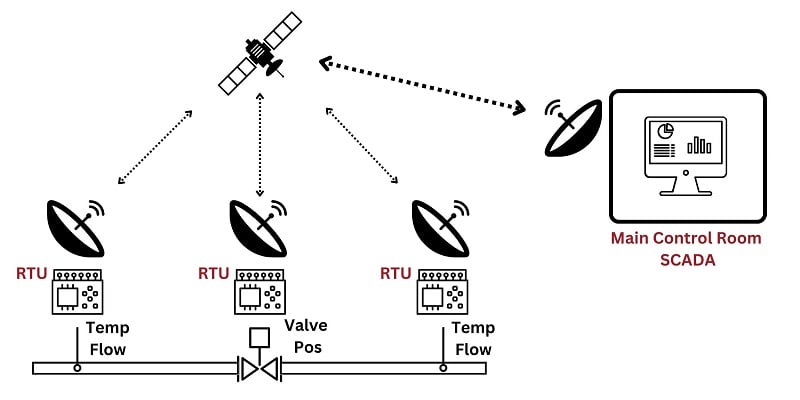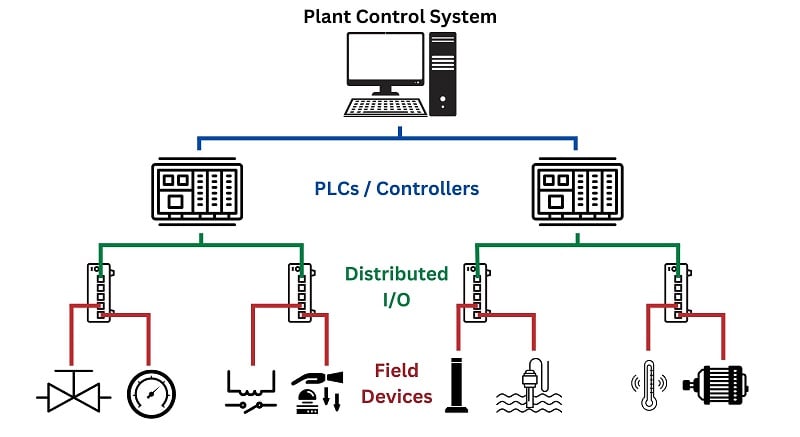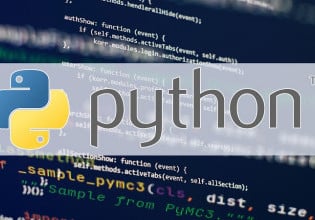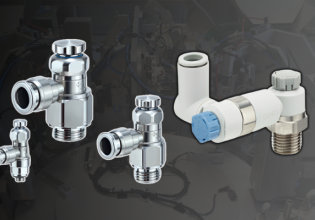DCS vs. SCADA: What’s the Difference?
Controlling and optimizing plant processes is the goal of most control systems. It can be a challenge to distinguish between different types of control: a DCS or a high-level SCADA system?
When automation technologies are first developed, they often have specific purposes and use cases. However, as technologies mature, they begin to adopt features from other systems, constantly blurring the lines between the technologies. In common language, the terminology that used to separate different systems becomes interchangeable, often incorrectly. Sometimes, the blurring of the terminology is acceptable, but it is important to understand some of the subtle differences between the two.
One such example is the fine delineation between supervisory control and data acquisition (SCADA) and distributed control systems (DCS). Since they are both designed to provide overarching control using both outputs and feedback from a wider system, they can seem quite similar on the surface.
This article will attempt to detangle these two technologies and highlight some of the differences and use cases for each of them.

Figure 1. At a basic level, both SCADA and DCS are designed for controlling and optimizing industrial processes in plant systems. Image used courtesy of Adobe Stock
What is SCADA?
Supervisory control and data acquisition (SCADA), as the name implies, got its start as a method of collecting and storing data for archival purposes as well as some basic process control.
SCADA is not simply a software package or a hardware device. It is the interface between the two, though it does lean more towards being software. A SCADA system bridges the gap between programmable logic controllers (PLCs) and computers, servers, operating stations, and so on. SCADA relies on programming (from perhaps an engineer’s computer) to determine where collected data from the PLCs should be sent and what should be done about it.
However, SCADA is not just for controlling a PLC or two. Plenty of manufacturing facilities are either completely controlled by or have large portions controlled by SCADA systems. They still represent a form of central control, where they manage the flow of data. In general, data is collected by sensors and passed to PLCs. SCADA collects the data from the PLCs and then routes it to servers where it can be called for display, troubleshooting, and process management purposes. This can generate a lot of data on a wired or wireless network, meaning network management and security is a priority with SCADA systems.
SCADA can handle simple control commands, such as opening and closing valves, sounding alarms, and similar types of controls. But in the bigger picture, SCADA is concerned with the collection, management, flow, and storage of data from the sensor network through PLCs or other controllers. As a management system, it is easily scalable and adaptable, as it does not directly deal with sensors. New sensors and actuators can be added to the PLC side, and SCADA will simply manage the new dataset, including the data from the new sensors.
Consider an oil pipeline with numerous sensors spread out over a large geographical area. At each important monitoring station, a PLC collects data from the sensor network that is monitoring the pipeline. This data is then managed by the SCADA; it is archived in a server farm locally and on the cloud, sent to a display dashboard at the monitoring station, and to a control room in the regional headquarters.

Figure 2. Example of SCADA managing an oil pipeline. Image provided by the Control.com Engineering team
What is DCS?
Distributed control systems (DCS, not to be confused with dual-check safety in robotic systems, also abbreviated DCS…) are also a more complex combination of hardware and software. However, in contrast to SCADA, DCS leans a little more on the hardware side of the equation. A DCS often includes controllers with advanced processing capabilities and complex software to make control decisions based on incoming data.
Unlike SCADA, DCS is geared towards more local control for more complex operations than simply opening a valve and archiving data. Even so, modern DCS configurations can handle these tasks, plus displaying data on a dashboard in a control room, making simple control decisions and many of the other tasks that could be handled by SCADA.
Local control means more rapid, secure operations. Data does not need to flow all over the entire control system, but instead can be retained near the point of impact.

Figure 3. Example of DCS managing a local factory automation system. Image provided by the Control.com Engineering team
Advantages and Disadvantages
With more flexibility in control algorithms, DCS has some advantages over SCADA in certain situations. For example, suppose the temperature inside a reactor needs to be tightly controlled. Rather than simply opening and closing a valve to steam or cooling water, depending on the situation, the DCS can instead measure temperature and then apply some more complex logic, such as PID control, to monitor the temperature. Without the need to talk to centralized control, the data also remains close, leaving fewer opportunities for hackers to steal or corrupt it.
The disadvantage is that DCS may require control points and hardware in more locations. It also tends to be less scaleable or adaptable as compared to SCADA.
Comparing SCADA vs. DCS in Biology Terms
These two systems should not be viewed as competitors, in spite of the title of this article. Instead, think about the way the human body and its nerves react. Overall, signals from the brain are in charge of motive control.
If someone decides to pick up a book from the table, their brain tells their arm to move a certain way and to move their fingers and apply pressure. Throughout childhood, the brain is learning how much pressure to apply and how to position the components so that by the time the person is fully grown, they have a ton of historical data to recall. In this way, the central nervous system is like SCADA; it manages motions and stores data, every signal of which is fed through to the brain.
Now, consider the situation where the person instead touches the hot stove. The pain signal does not have time to go all the way to the brain, recall what to do when an object is too hot, and finally send a control signal back to the hand to move it from the stove. Instead, reflexes take over, and the hand quickly moves away from the burner, without any recall of historic data. Just a quick, localized motion. It is almost entirely a “hardware” solution. This is similar to DCS.
Just as in the human body, these systems need not be enemies. Instead, they can work together. Immediate data collected and acted upon by DCS can be archived, displayed and acted upon by SCADA as well, just as the person likely avoids touching the hot stove again once the reflexive motion has completed.
Choosing Between Control Architecture Models
Ultimately, the line is quite blurry between these two technologies, as is common throughout industrial control systems. There is no real “best” choice that fits perfectly within every manufacturing environment. One must evaluate the advantages of each system for their particular automation needs, and in some cases, both can be deployed simultaneously, exploiting the advantages of each.
Regardless of which system (or both systems) are deployed, one must evaluate their network capabilities and security to ensure the safety of both the data and the personnel and equipment at the facility.





